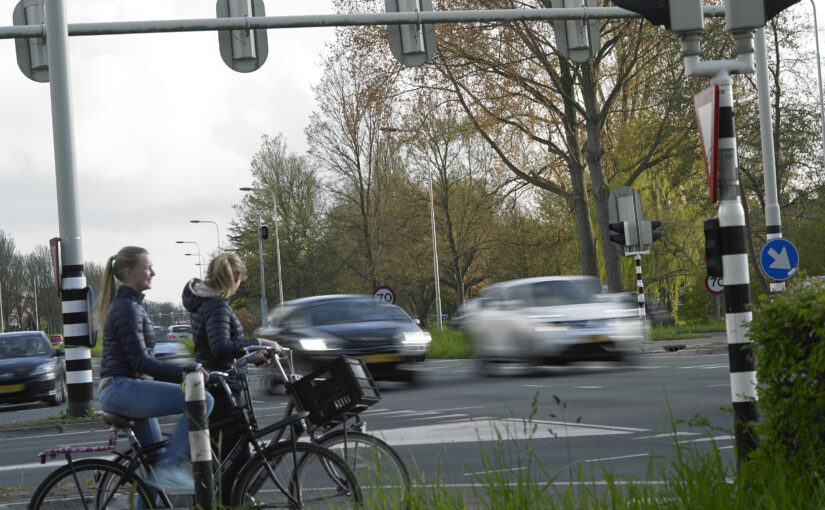
U.S. Township Introduces Curvy Road Lines as a Traffic-Reduction Strategy to Slow Down Speeding

Title: Curvy Lines to Discourage Speeding? Pennsylvania Town’s Unique Road Design Attracts Attention
In Montgomery Township, Pennsylvania, an unusual—but very real—road renovation has sparked conversation among locals (and online). In a bid to reduce speeding on Grays Lane, town officials opted to replace conventional road markings with surprising, snaking lane dividers—referred to locally as “curvy lines.” This road design is not an art prank or a digital fabrication; it represents a calculated and intentional experiment in traffic safety.
Despite its odd appearance, the new roadway design stems from meaningful collaborations. As mentioned in a statement posted on Montgomery Township’s official Facebook page just days before April Fool’s Day, the new layout was thoroughly discussed with Highway Safety Officers, Traffic Engineers, and the Department of Public Works. Its aim: “traffic calming.”
How Curvy Lines Influence Driver Behavior
This initiative is part of a larger trend of innovative urban planning strategies known as “traffic calming.” These strategies are physical alterations to roadways intended to slow vehicles and improve safety in residential neighborhoods. Typical approaches include speed bumps, narrowed lanes, and roundabouts. However, for Grays Lane, planners chose a visually striking option—non-linear, wavy lines meant to attract drivers’ focus and compel them to reduce speed.
The rationale behind curvy lines as a safety tactic is backed by psychological studies regarding human behavior. Research indicates that when drivers face unfamiliar or seemingly disorderly road conditions, they instinctively exercise caution and lower their speed. The unexpected design necessitates concentration, as drivers must visually and mentally maneuver through the modified layout.
Public Reactions: Confusion, Critique, and Curiosity
While the theory may be plausible, the practical response to the design in Montgomery Township has been varied. Shortly after the township’s announcement of the new layout, social media erupted with comments ranging from humor to indignation.
“Was the road crew tipsy while painting this?” one user remarked. Others compared the road to a preschool art project or expressed disappointment that simpler solutions—such as speed bumps—weren’t utilized.
Additionally, some residents raised serious issues regarding cyclist safety. With previously well-defined shoulders seemingly altered or hidden by the new curvy markings, there are concerns that cyclists might face danger. “Let’s hope it’s removed before someone on a bike gets hurt,” another commenter cautioned.
Town Officials Defend Their Decision
Facing heightened skepticism and online mockery, Montgomery Township officials remain resolute. “This is a valid precaution that has been implemented,” stated Ava Komasz, public information assistant for the township. She reiterated that the design of the road had received technical endorsements and was created with public safety in focus.
To strengthen enforcement of traffic laws on Grays Lane, officials have announced plans to introduce a series of chicanes—curvilinear paths that compel vehicles to slow down by altering the driving route. Whether the curvy lines will become a lasting feature or a temporary aspect of this evolving traffic safety initiative is still an open question.
Local Residents: Still Uncertain
CBS News Philadelphia explored Grays Lane the day after the road’s launch and spoke with locals to assess their views. Many characterized the design as “strange,” “awkward,” or “an eyesore.”
“It’s absurd,” one resident declared, adding that it appears ineffective. “At the moment, everyone is just driving through the center of it.”
Others concur that the unconventional markings fail to achieve their intended goal since drivers seem perplexed about their appropriate response. While confusion may briefly slow speeders, enduring usability and safety—particularly for pedestrians and cyclists—are ongoing concerns.
A Trend in Playful Infrastructure?
Although Montgomery Township’s endeavor may seem odd, it is not entirely unprecedented. Around the world, designers and traffic engineers are exploring more whimsical or unexpected infrastructure options to address behavioral challenges.
From vibrant pedestrian crossings in Europe to optical illusions mimicking speed bumps in Asia, the aim is to catch attention and shift perspective—without necessarily relying on speed traps or automated enforcement measures.
Final Thoughts
Despite facing skepticism and a fair share of jest, Montgomery Township’s curvy line approach symbolizes a broader movement in urban design: reimagining how cities can engage citizens through engineering. Whether Grays Lane’s experiment will serve as an example for other communities or a cautionary tale remains to be seen.
For the time being, the road acts as a reminder that sometimes, when it comes to safety—veering off the straight and narrow might be the best route.
Stay informed on updates through Montgomery Township’s official Facebook page.
Sources:
– Montgomery Township Official Facebook Post
– CBS News Philadelphia Report on Grays Lane
– Regional Traffic Engineering Guides and Calming Strategies